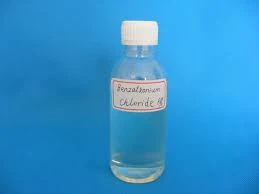poly aluminum chloride
Poly Aluminum Chloride An Overview
Poly Aluminum Chloride (PAC) is an inorganic polymer widely utilized in various applications, particularly in water treatment processes. Its popularity is attributed to its effectiveness as a coagulant, combining both the properties of aluminum salts and polymeric compounds. This article delves into the composition, benefits, applications, and considerations associated with PAC.
Composition and Properties
Poly Aluminum Chloride is produced by the reaction of aluminum hydroxide with hydrochloric acid, yielding a water-soluble compound. It typically appears as a white or slightly yellow powder and can be found in different forms, including liquid and solid. The composition of PAC consists of a varying proportion of aluminum, chloride ions, and hydroxyl groups, which contribute to its unique properties.
The polymeric nature of PAC enables it to form large aggregates, which facilitate the removal of suspended particles in water. It possesses a higher charge density than traditional aluminum salts, enabling better particle destabilization, sedimentation, and clearing. These attributes make PAC a versatile agent in various domains, from municipal water treatment to industrial applications.
Benefits of Using PAC
One of the primary benefits of PAC is its efficiency in coagulating and flocculating particles suspended in water. This results in improved clarity and reduced turbidity of treated water, making it suitable for drinking water purification. Additionally, PAC often produces a smaller volume of sludge compared to other coagulants like alum, which is advantageous for treatment plants seeking to minimize waste.
PAC's effectiveness is not limited to just potable water treatment; it also finds extensive use in wastewater treatment, where it removes contaminants, organics, and heavy metals. Its ability to perform effectively across a wide range of pH levels further enhances its applicability, unlike some traditional coagulants that may perform poorly in acidic or alkaline conditions.
poly aluminum chloride

Furthermore, PAC has a lower dosage requirement than many chemical alternatives. This not only translates to cost savings but also reduces the environmental impact associated with chemical runoff. Its lower corrosive nature compared to other aluminum-based coagulants makes PAC a safer option for both operators and the environment.
Applications of PAC
The applications of Poly Aluminum Chloride span across various sectors. In municipal water treatment, PAC is a vital component in the purification process. It helps in the clarification of drinking water and is also effective in treating industrial effluents. The food and beverage industry uses PAC to clarify beverages such as juices and soft drinks. Additionally, in the paper and pulp industry, PAC serves as a retention and drainage aid during the manufacturing process.
PAC is also employed in construction, particularly in the preparation of concrete and as a bonding agent in various formulations. It aids in water retention, improving the durability and longevity of concrete structures. Moreover, PAC is increasingly being utilized in agriculture, primarily for soil improvement and as a flocculant in irrigation systems to retain nutrients and enhance water quality.
Considerations and Safety
While PAC is generally regarded as safe, it is crucial to handle it with care. Proper personal protective equipment (PPE) should be worn during its handling to avoid skin and eye contact. Moreover, its dosage should be meticulously calculated to avoid any negative impacts on the water quality, particularly concerning aluminum levels in treated water. Regulatory guidelines should be followed to ensure the safety of both human health and the environment.
In conclusion, Poly Aluminum Chloride is a highly effective coagulant with numerous applications across various industries. Its unique properties, coupled with economic and environmental benefits, position it as a preferred choice for water treatment and other applications. As industries continue to seek sustainable solutions, PAC stands out as a versatile and efficient chemical that meets diverse needs while minimizing environmental impact. The ongoing research and development surrounding PAC are likely to unveil new advancements and applications in the near future, making it an area of significant interest for both scientists and businesses alike.
-
Dodecyldimethylbenzylammonium Chloride: High-Purity DisinfectantNewsAug.30,2025
-
2-Phosphonobutane-1,2,4-Tricarboxylic Acid: Scale & CorrosionNewsAug.29,2025
-
Premium Isothiazolinones | Broad-Spectrum Biocidal SolutionsNewsAug.28,2025
-
LK-319 Special Scale And Corrosion Inhibitor For Steel Plants: Advanced Solutions for Industrial Water SystemsNewsAug.22,2025
-
Flocculant Water Treatment: Essential Chemical Solutions for Purification ProcessesNewsAug.22,2025
-
Isothiazolinones: Versatile Microbial Control Agents for Industrial and Consumer ApplicationsNewsAug.22,2025





